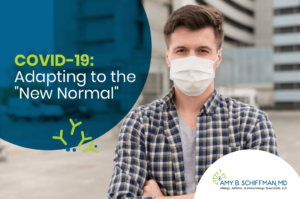Overview
Can we still go back to “normal”?
That has been the question that has been haunting us with the global pandemic. Healthcare workers have been treating coronavirus-19 (COVID-19) patients and non-COVID-19 patients to the best of their abilities, without always having clear answers. Most people believe that going back to how things were is not feasible or safe. We can’t deny that the challenges and changes brought by COVID-19 have been impactful, and necessary.
US Healthcare on COVID-19
There are 2,007,531 COVID-19 cases and 112,471 deaths in the United States of America (USA) as of June 08, 2020. Almost half of the US population get health insurance from their jobs. However, the country is facing thousands of businesses shutting down because of COVID-19, leaving numerous citizens without healthcare insurance coverage in the middle of a global pandemic. Additionally, the pandemic highlighted racial disparities and discrimination in healthcare.
Hospital closures are an example of healthcare disparity and decreasing the availability of adequate care. Prior to 2020, 121 US hospitals were shuttered, with 453 more at risk of closure. The closures made 2019 the most significant year for loss of emergency and urgent care. The majority of the hospitals were rural medical clinics and hospitals but also included a number of emergency clinics in urban cities, such as Phoenix and Chicago. These closures are leaving communities with insufficient access to medical care.
While the popularity and access to telemedicine may fill some of the gaps created by hospital closures, it does not fully address the lack of access.
Challenges of COVID-19
-
Health industry challenges
There is no vaccine or fully effective therapy for COVID-19. The virus that causes COVID-19 has never been seen before in humans. That is why scientists all over the world are working double-time to produce a vaccine and drugs to combat COVID-19 infection. Despite the lack of broad-based, accessible medication, supportive care has been a great help in supporting patients to recovery.
The curve of demand and supply in handling the surge of patients that require high-level support and care has been challenging. The healthcare industry and governments are struggling to keep up with the lack of medical supplies and personal protective equipment (PPE). Healthcare workers are concerned about their infection and mortality rates, and the ability to take care of themselves and their patients. The impact on the economy heightens the difficulties that individuals face, adding economic worries to health challenges. Adequate safety procedures and safeguards must be in place prior to resuming social interactions.
According to a report, up to 80% of COVID-19 infection cases in the US are mild or even asymptomatic. Advanced age and co-morbidities increase the severity and mortality. The healthcare system struggles to address acute concerns of COVID-19 infection while maintaining emergency care for heart and brain disorders, acute care of cancer and general disorders, and surveillance.
-
Socioeconomic challenges
Social isolation to help flatten the curve of COVID-19 infection has created a global recession. Millions of people have been laid off or lost their jobs. The government is also trying to keep up with the increasing number of unemployment applications. Businesses have adapted by supporting telework, for the short and long term.
According to the United Nations Development Programme Administrator Achim Steiner, the socioeconomic fallout due to the global pandemic requires close attention. Crisis management of both economic issues and COVID-19 are imperative. He emphasized the importance of maintaining the operational capacity for economies. He also mentioned that the socioeconomic impact of the crisis threatens development progress and the lives of people in developing and third world countries.
What to expect in the “New Normal”
Here’s what you should expect on the post-COVID-19.
-
General Observance on Social Distancing
Social greetings with physical contact in public are no longer acceptable. Minimizing physical contact while socializing may help avoid to avoid a fatal second wave of the coronavirus 2019 (COVID-19). Physical distancing and wearing face masks are socially acceptable means of maintaining personal and community safety.
rockets due to changes in consumer behavior. -
Healthcare
Patients will have the option of traditional office visits, telehealth, or a mixture of both. While some conditions require in-person interaction, a variety of concerns can be addressed digitally.
People are more aware of the importance of a healthy lifestyle, immunization, and proper hand hygiene. Washing hands and minimizing respiratory droplets spread through face masks and social distancing can reduce the spread of COVID-19. Mandatory temperature checks are in place prior to entering hospitals, doctor’s offices, and other establishments.
Bottomline
The world is experiencing ten years’ worth of change in the span of weeks. The global healthcare system has been challenged to adapt to the COVID-19 situation. Dr. Amy Schiffman is an allergy and immunology specialist in Boca Raton, Florida. She is more than happy to help you during this troubling time with both traditional and telehealth appointments to address your allergy and immunology concerns.

